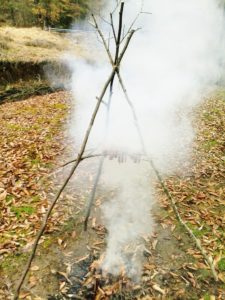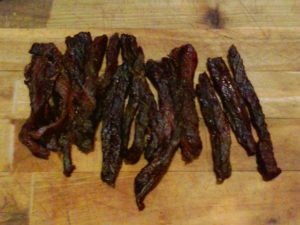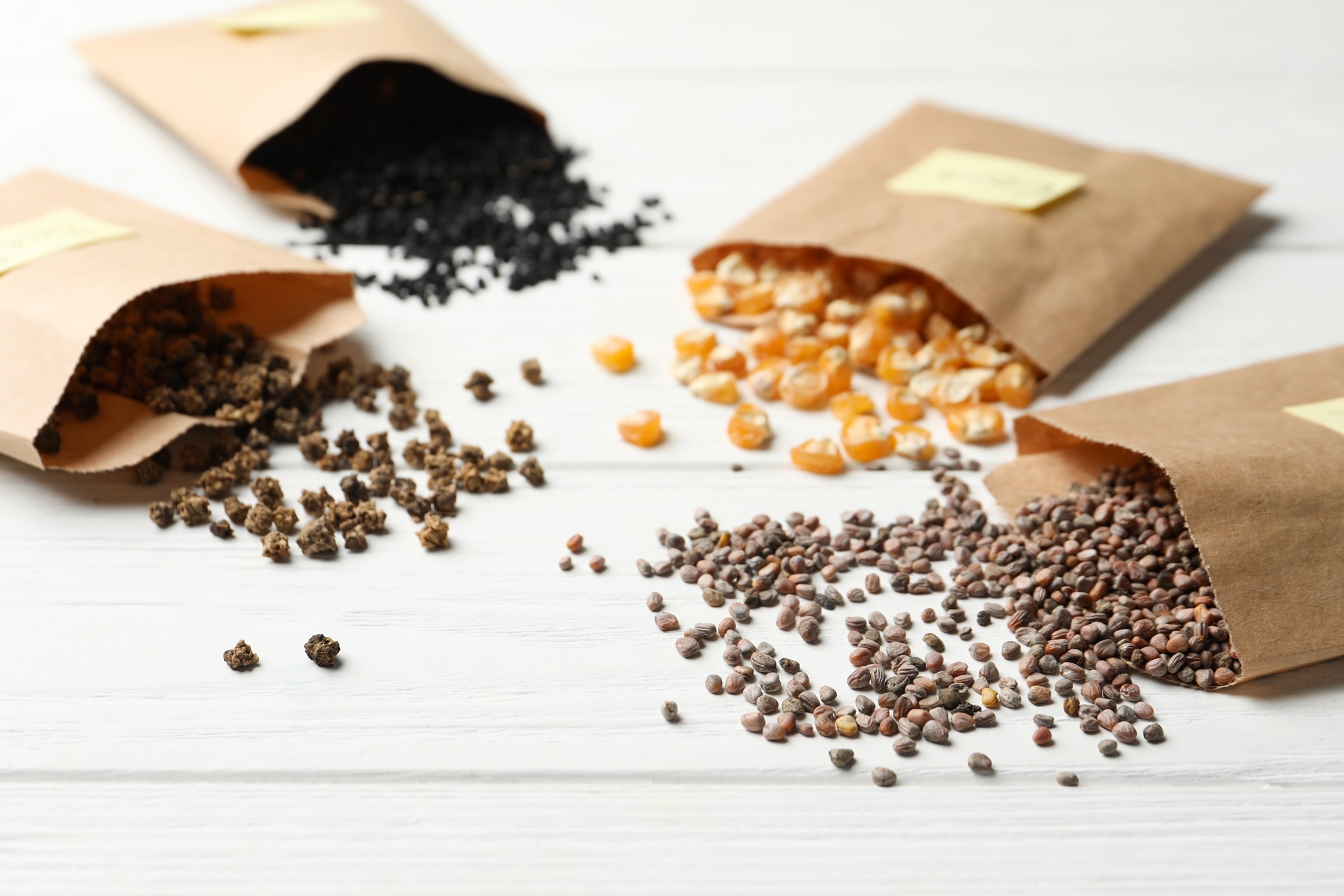 Before there was refrigeration, meat was cured by various methods to preserve it for future consumption. When supplies were available, meats were soaked in brine consisting of heavily salted water and could also have included other seasonings to add a variety of flavors. Today, if you were out in the field without conventional supplies you can still preserve meat by drying it using smoke and sun. An emergency scenario might go something like this: you’re lost or abandoned in the woods and you have received a windfall of meat, perhaps from trapping, hunting or by natural circumstances. The quantity is more than you can eat now and you need food for a longer stay or for a journey to civilization. It would be prudent to capitalize on this supply for your situation.
Before there was refrigeration, meat was cured by various methods to preserve it for future consumption. When supplies were available, meats were soaked in brine consisting of heavily salted water and could also have included other seasonings to add a variety of flavors. Today, if you were out in the field without conventional supplies you can still preserve meat by drying it using smoke and sun. An emergency scenario might go something like this: you’re lost or abandoned in the woods and you have received a windfall of meat, perhaps from trapping, hunting or by natural circumstances. The quantity is more than you can eat now and you need food for a longer stay or for a journey to civilization. It would be prudent to capitalize on this supply for your situation.
There are several benefits to the smoking process:
- It helps to keep away flies and other bugs from the wet meat as it forms an initial thin dry surface.
- Smoke chemically inhibits the growth of molds and yeasts on the meat’s surface, thus contributing
to its preservation.
- It also imparts taste and varies with intensity based on length of exposure. Various hardwoods
such as hickory, apple and maple are preferred for smoking meats. Conifers are not
recommended.
Associated with smoke is heat and the heat is the main element of  preservation because it removes moisture from the meat thus removing the foundation for bacterial growth. The smoke and drying times will vary based on the humidity and temperature of the local climate. Some folks will smoke the meat for 2 to 6 hours and then let the sun dry it out for 2-3 days, but you can keep a low smoldering fire for the whole process. Although moist pliable meat is preferred for consumption, the drier and stiffer piece will last longer. In regard to types of meat, red meat tends to last the longest; fish on the other hand has a very short shelf-life.
preservation because it removes moisture from the meat thus removing the foundation for bacterial growth. The smoke and drying times will vary based on the humidity and temperature of the local climate. Some folks will smoke the meat for 2 to 6 hours and then let the sun dry it out for 2-3 days, but you can keep a low smoldering fire for the whole process. Although moist pliable meat is preferred for consumption, the drier and stiffer piece will last longer. In regard to types of meat, red meat tends to last the longest; fish on the other hand has a very short shelf-life.
A traditional primitive smoking method is to make a 6 foot tripod with horizontal cross-bars tied 4 feet off the ground. Additional sticks can be placed upon these cross-bars in order to hang additional meat. This approach can be expanded to handle a larger volume of meat. Meat strips should be no thicker than 1/4 inch and approximately 1 inch wide although lengths of meat may vary. Just hang the pieces over the horizontal sticks without touching each other to allow for better smoke coverage. A small smoldering fire from dry wood works best, and the cooler and slower the process, the better because you want to dry the meat without cooking it. If you have a tarp, you can wrap the tripod stand like a teepee thus capturing the smoke, but you can also use bark or leafy branches to create an enclosure as well. You don’t need to have an enclosure but it is more difficult to focus the smoke to be effective.
Preserving meat takes time but the rewards can be great. As usual, I always encourage folks to try it now so that you will be prepared when a real emergency happens.
By: Ken Youngquist
 Ken Youngquist is the creator of Survivaltek, a website dedicated to teaching the ways and means to survive. From his youth, Ken was captivated by primitive living skills, and in his adulthood was intrigued by the television Series MacGyver. The result has been the study and practice of survival skills and the desire to pass on the mantle of preparedness to others. You can visit and learn more at: Survivaltek.com.
Ken Youngquist is the creator of Survivaltek, a website dedicated to teaching the ways and means to survive. From his youth, Ken was captivated by primitive living skills, and in his adulthood was intrigued by the television Series MacGyver. The result has been the study and practice of survival skills and the desire to pass on the mantle of preparedness to others. You can visit and learn more at: Survivaltek.com.








0 Comments